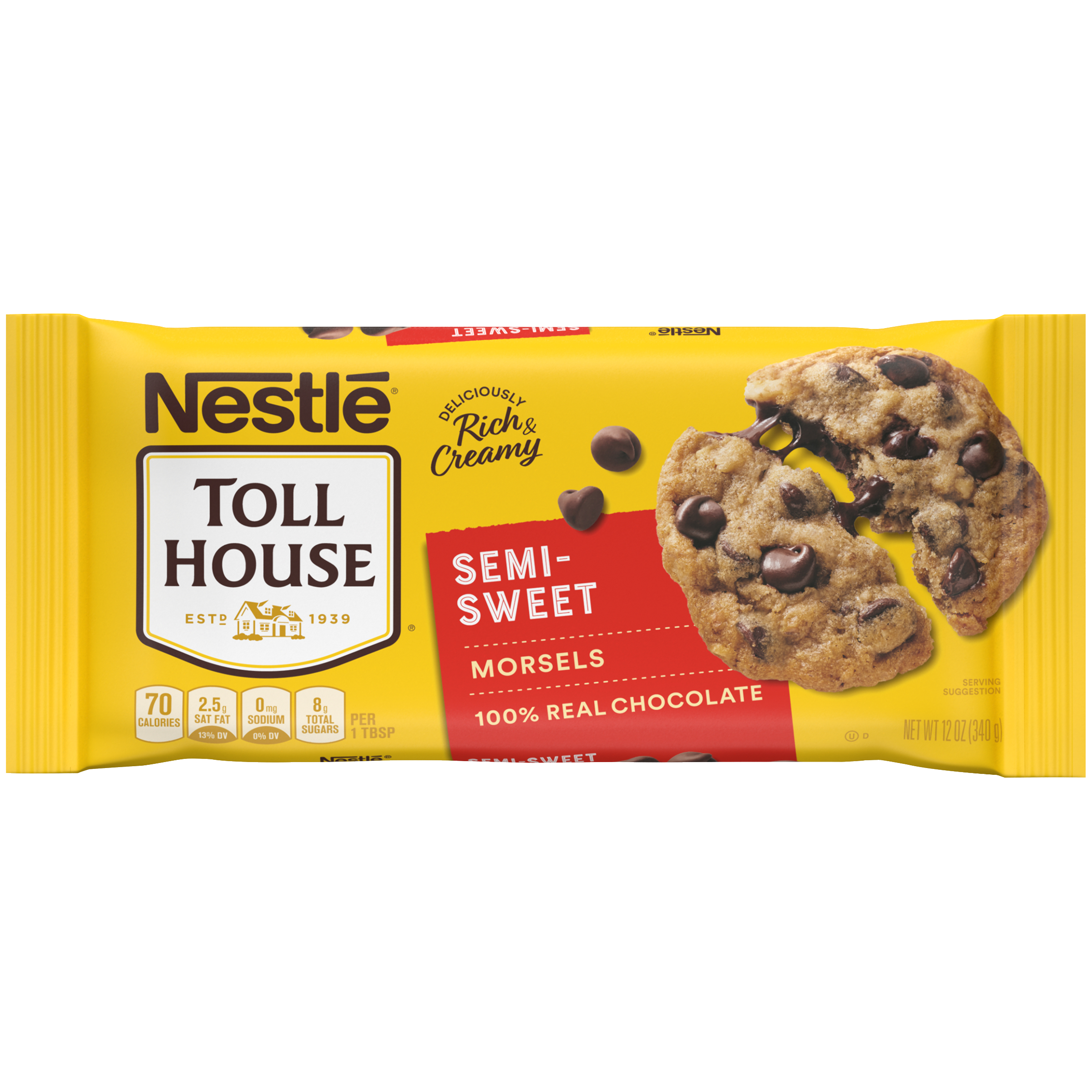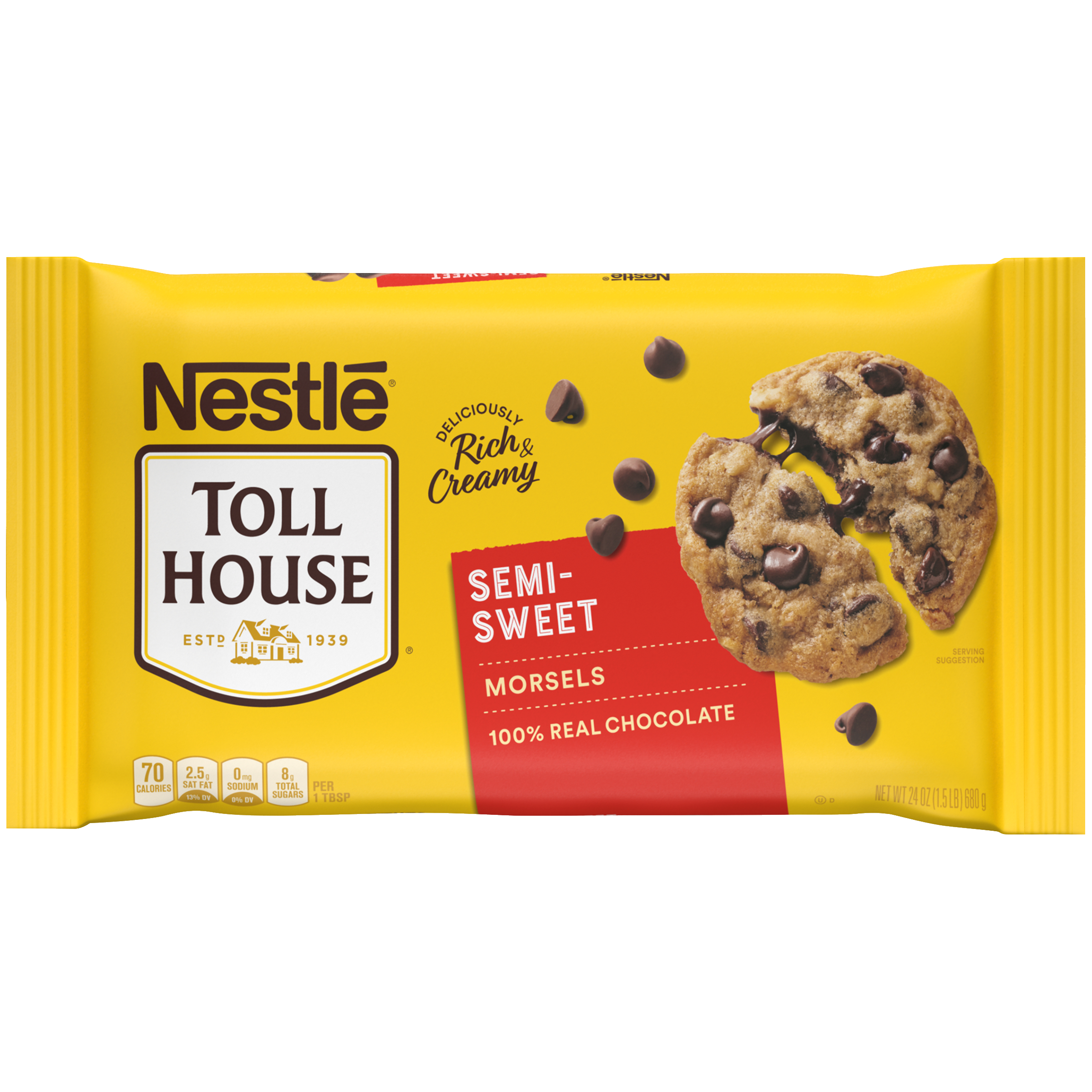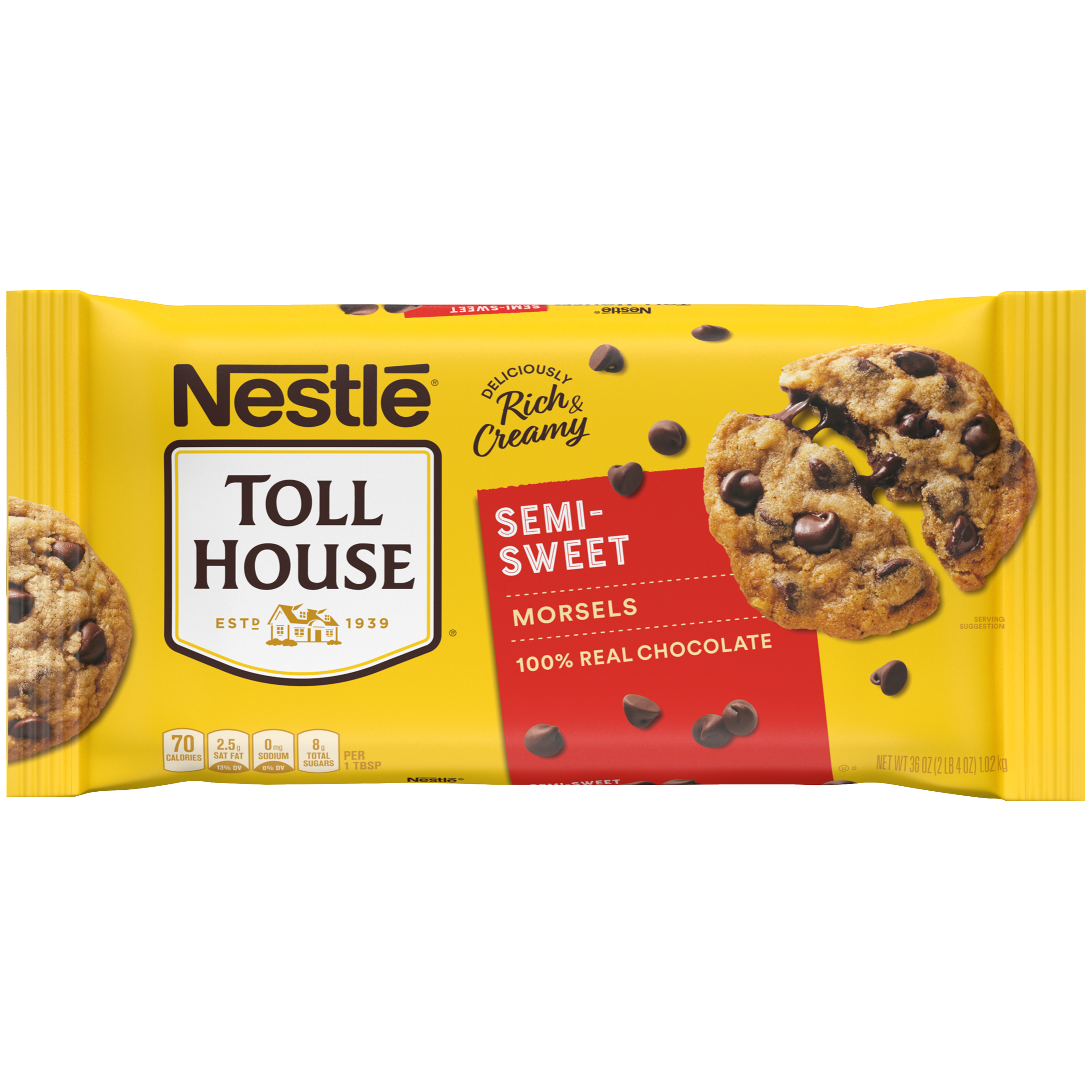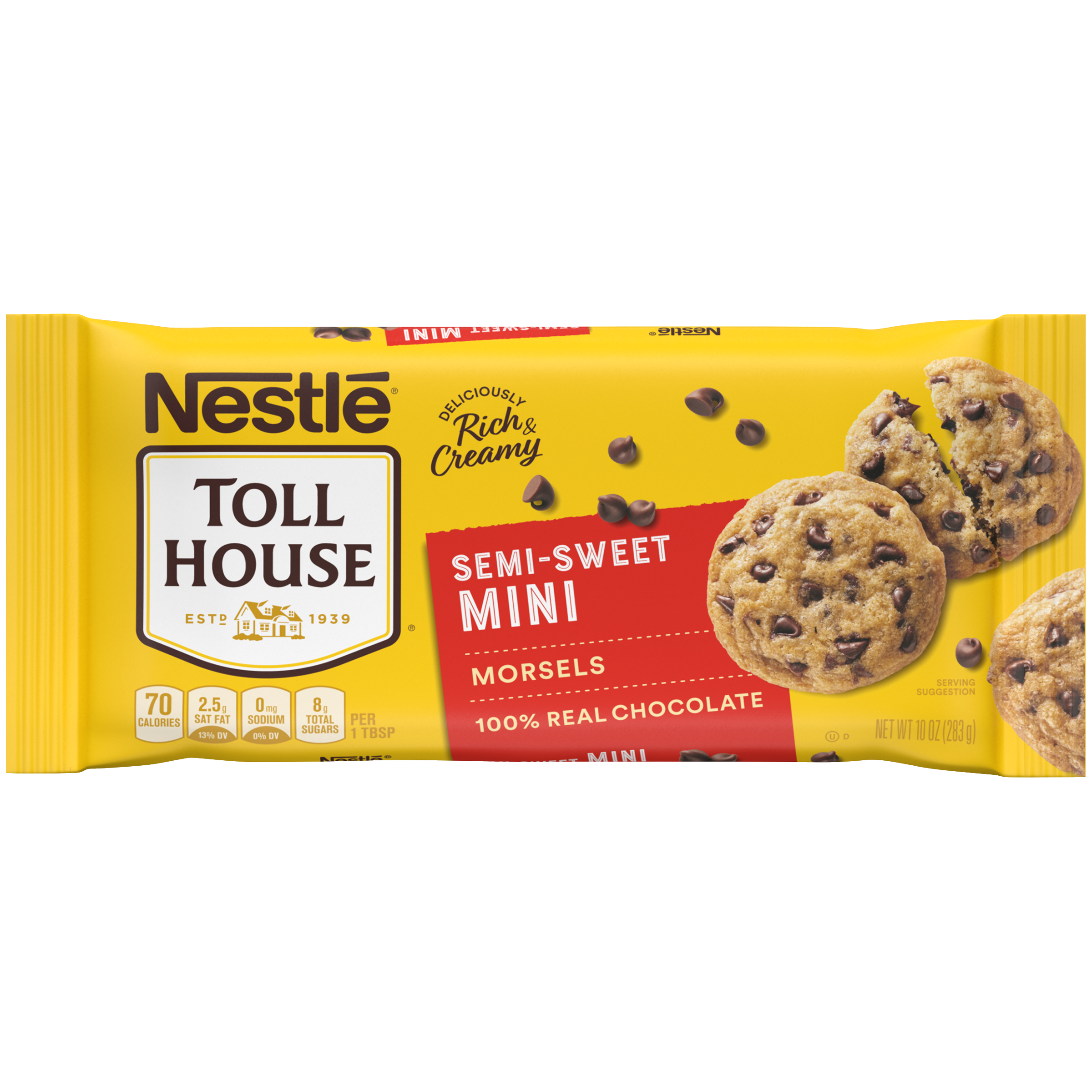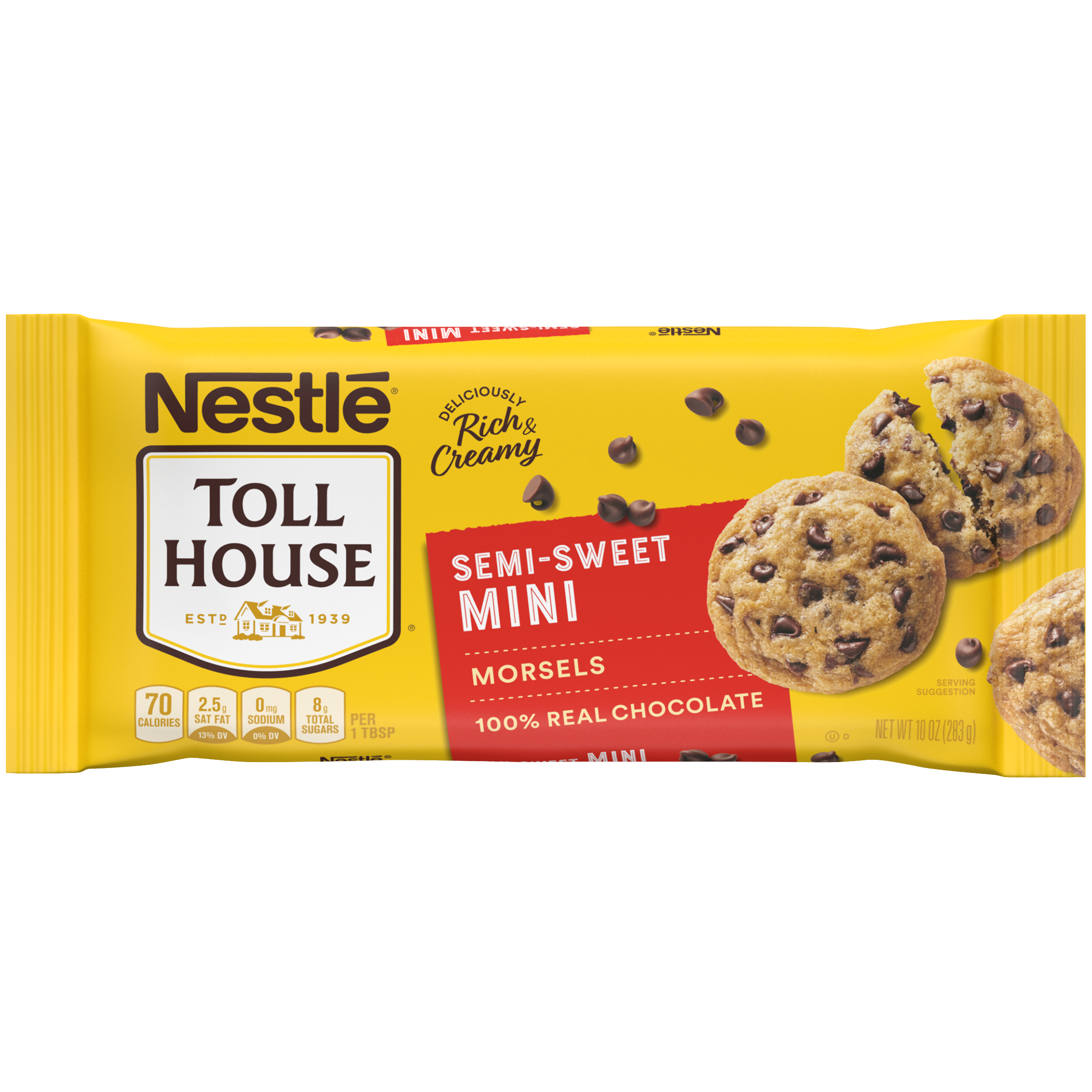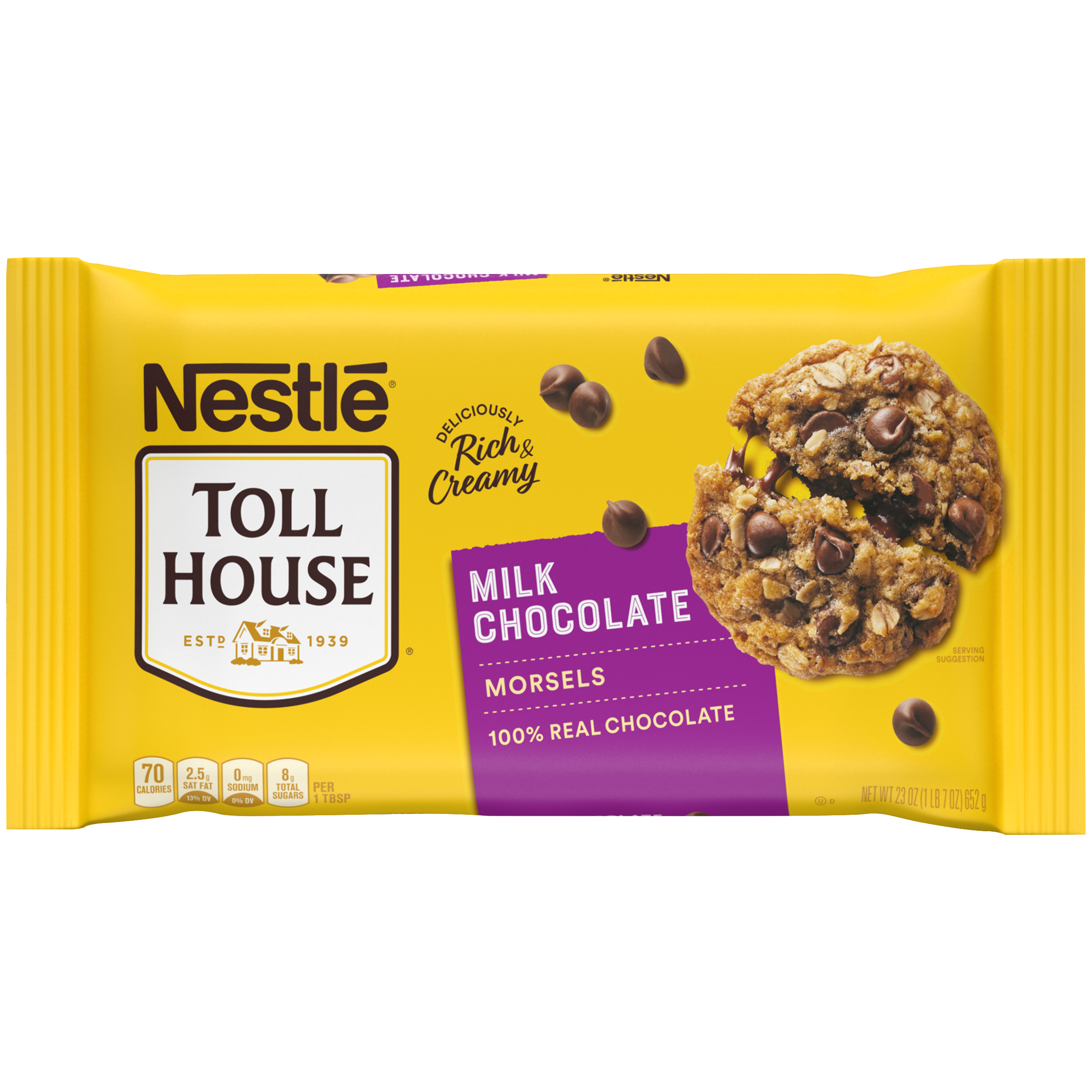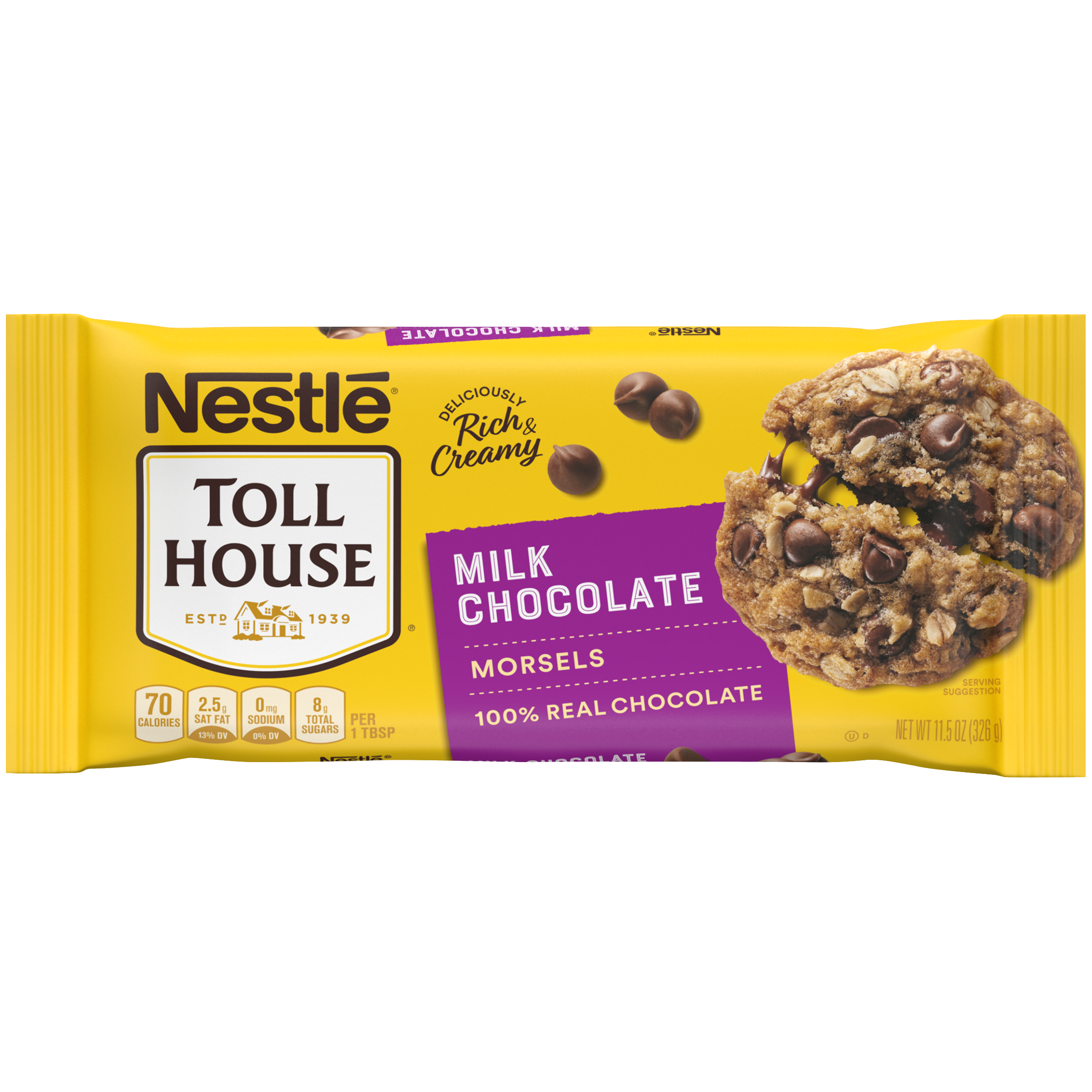
Toll House by Nestle USA
Please log in to see analytics.
ANALYTICS POWERED BY


Brand Information
Nestlé Toll House Morsels have been helping to bake up the best for generations. Add real flavor to your favorite recipes such as cookies, morning oats, muffins, yogurt and granola. Baking and cooking with our delicious morsels is a great way to show the people closest to you how much you love them. At Nestlé Toll House, we believe you should never miss an opportunity to give and receive love through baking. Through every morsel - and every moment - we share, we make a difference in each other's lives.
Looking for more information?
View our websitePlease log in to see the brand policies.
Frequently Asked Questions
How do I measure added ingredients such as morsels, nuts, coconut or raisins?
Use a dry measuring cup and fill to the top only, not to heap.
What is the shelf life for NESTLÉ® Baking Products?
All of our NESTLÉ® TOLL HOUSE®, LIBBY’S® and CARNATION® products have a “Best By”, “Use or Freeze By”, “Best If Used By”, or “Best Before” date printed on the packaging. We do not recommend using products beyond the date indicated on the package.
How should I store my NESTLÉ® TOLL HOUSE® Morsels?
Chocolate should be stored in a cool dry place, around 60-70 degrees F. Your pantry is the perfect home for our morsels! If you open your morsels and they’re clumped together or chalky, this is the perfect indicator that they were not kept in a cool/dry place. If your morsels have “White Freckles”, “white spots”, “cloudy”, “dusty”, “powdery”, “scuffed”, “ashy”, “chalky”, “splotchy”, “grayish” these are good indication that these morsels are bloomed caused by exposure to heat or cold.
Can I freeze NESTLÉ® TOLL HOUSE® Morsels?
Freezing can be done but it will not significantly increase the shelf life. If frozen, bring the morsels to room temperature slowly or moisture will gather and may cause sugar bloom (white powdery appearance). Chocolate becomes hard and brittle when chilled so allow it to come to room temperature before using.
My chocolate appears to have a white film on it. Is that okay?
The "whitish" appearance or film that you may see on your products is what we call "bloom." Bloom is a "whitish" or sometimes "grayish" film caused by the cocoa butter or sugar rising to the surface when chocolate is stored at temperatures that fluctuate from hot to cold. This dulls the rich brown chocolate color but does not affect the taste. When the chocolate melts, it regains its attractive color.
Just like us, chocolate is sensitive! When chocolate is exposed to heat, the fat comes out of suspension. At this point, the chocolate’s structure is melted and cannot cool in the same manner, so the fat appears on the surface as “ fat bloom.
This can happen from many scenarios; From something as simple as the bags sitting in your car for 45 minutes while you run errands on a summer day or when they’re stored next to your toaster on your counter top, or on your windowsill where the sun is shining. Storage that is too cold causes "sugar bloom".
When chocolate is exposed to cold (ie. frozen) and then taken back to room temperature, condensation will form on the cold chocolate, just like it does on the outside of a cold glass of lemonade on a hot day! When the moisture evaporates, it leaves behind sugar on the surface called "sugar bloom". This happens because the water from the condensation dissolves sugar on the chocolate’s surface. When the morsels warm up to the room temperature, that water evaporates, leaving behind the sugar crystals it formed.
To keep your morsels safe and free of sugar bloom, we recommend storing in 50-60%RH (average air humidity). If you do want to freeze our morsels, make sure the bag is SEALED (making sure you’ve pushed out as much air as possible). To defrost, place the chocolate in the refrigerator for a day, then you can bring it out to room. The key is to freeze fast then warm up warm up slowly to avoid condensation!

